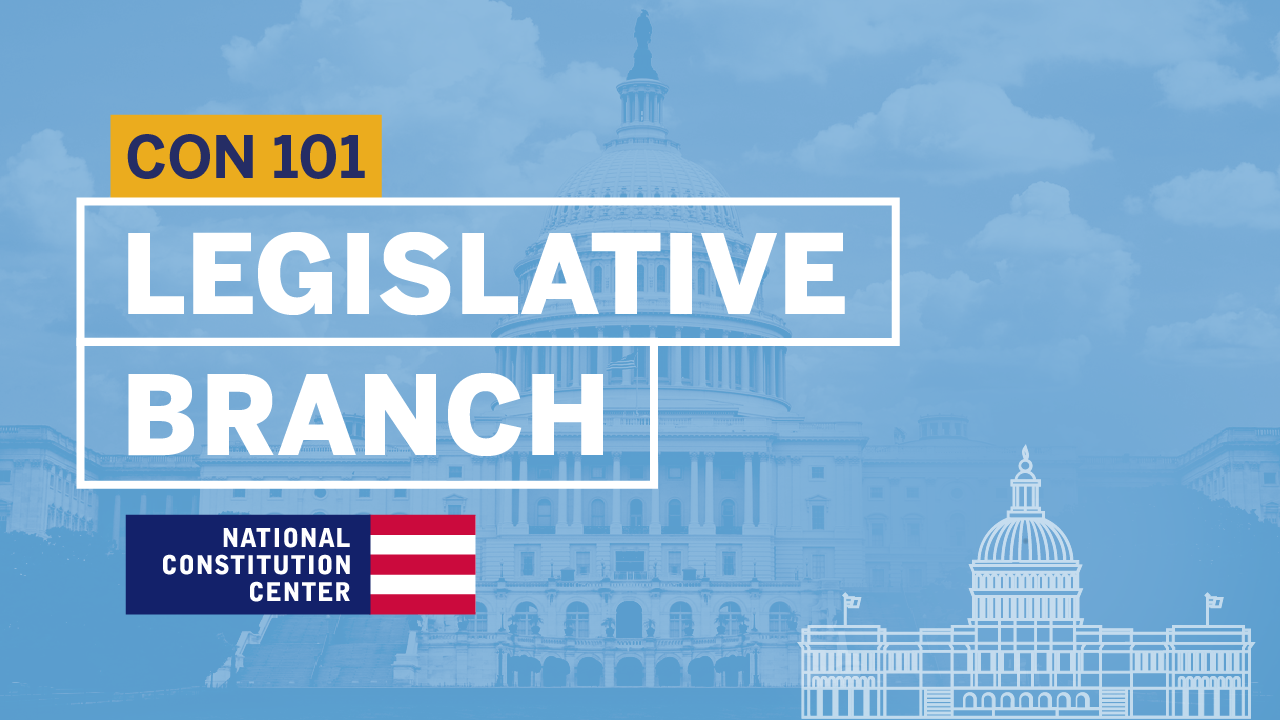Classroom Resources By Topic
Article I

Introduction
The Legislative Branch: The Constitution grants Congress—our nation’s legislative branch—the power to make laws. The legislative branch is outlined in Article I of the Constitution. The Constitution divides Congress into two houses—the U.S. House of Representatives and the U.S. Senate. The House of Representatives is composed of representatives proportionate to each state’s population. At the same time, the Senate is organized under the principle of equal state representation—with each state, regardless of its population, receiving two Senators.
What role does Congress have in the national government? What powers does the Constitution grant to Congress? And what are some of the limits on congressional power?
How did the Framers come up with Congress, and what were some of the debates at the Constitutional Convention? Has the original vision for what Congress should be changed over time?
What are some of the Supreme Court’s key decisions on congressional power? And what are some of the topics of ongoing constitutional debate?
Recorded Class
| Article I: The Legislative Branch with Gary Lawson All Ages Session |
Article I: Congress - The Legislative Branch |
Article I: Congress - The Legislative Branch |
Constitution 101
Module 7: The Legislative Branch: How Congress Works
Scholar Exchange: How Congress Works Featuring Congresswoman Mary Gay Scanlon
In this Fun Friday Session, Congresswoman Mary Gay Scanlon, member of the U.S. House of Representatives from Pennsylvania, joins Center President and CEO Jeffrey Rosen to explore Article I of the Constitution, which defines the powers of Congress.
Congress in Times of Crisis: Lessons from History
Joanne Freeman, Norm Ornstein and Ed Ayers reflect on how Congress has functioned in times of instability and change.
Article I and the role of Congress
In a special event at Columbia University, David Pozen of Columbia and Nicholas Quinn Rosenkranz of Georgetown University discuss how to restore the separation of powers.
Congress, the Constitution, and Compromise
Experts discuss how the potential end of the filibuster and other reforms might lead to different outcomes.
Congress, the Filibuster, and the Constitution
Shedding light on the history, constitutionality, and calls for reform of the filibuster.
Explore Article I on the Interactive Constitution
Section 1: Congress
Section 2: The House of Representatives
Section 3: The Senate
Section 4: Elections
Section 5: Powers and Duties of Congress
Section 6: Rights and Disabilities of Members
Section 7: Legislative Process
Section 8: Powers of Congress
Read the Interpretations:
Section 9: Powers Denied Congress
Read the Interpretations:








